How To Pray In Islam is one of the most important questions for every Muslim, especially for beginners. Prayer (Salah) is performed five times a day and is a central act of worship in Islam.
Before learning how to perform Salah, Muslims must meet certain conditions: being of age, having the right intention (niyyah), performing wudu (ablution), and praying at the correct time.
This article provides a step-by-step guide on how to pray in Islam, from preparation to the final tasleem.
How To Pray In Islam? Step by Step: How to Learn the Muslim Prayer
After performing your ablution (wudu) and having the intention for prayer (Niyat al-Salah), you can proceed and begin to pray salah.
Here is your guide to salah:
- Standing
- Takbir
- Fatihah – Recitation
- Ruku – Bowing
- Sujud – Prostration
- Tashahud – Sitting
Understanding these steps of salah is important to understand that the prayer is made up of rakah (Unit of Prayer). Every rakah has the same basic steps within it.
- There will be a part when you are standing.
- A part when you recite from the Quran.
- A part when you bow down.
- A part where you prostrate (make sujud).
These rakahs will alter slightly depending on which prayer you are performing. Here’s an overview of how the five daily prayers differ from one another:
- Fajr – has two rakahs.
- Dhur – has four rakahs
- Asr – has four rakahs.
- Maghrib – has three rakahs.
- Isha – has four rakahs.
Read also about : Where can a muslim pray?
Now let’s discuss in detail each part of Salah. How To Pray In Islam:
Sept 1: Make an intention to pray.
We began the prayer by expressing our heartfelt intention to pray to Allah. As soon as you begin, your sole emphasis should be on the prayer itself.
Step 2: Raise your hands to your ears and say: “Allahu Akbar.”

The prayer will formally begin when you say “Allahu Akbar”. From this point forward, you should concentrate solely on the prayer and try to avoid all distractions.
Step 3: Lower your hands and place them above your navel.
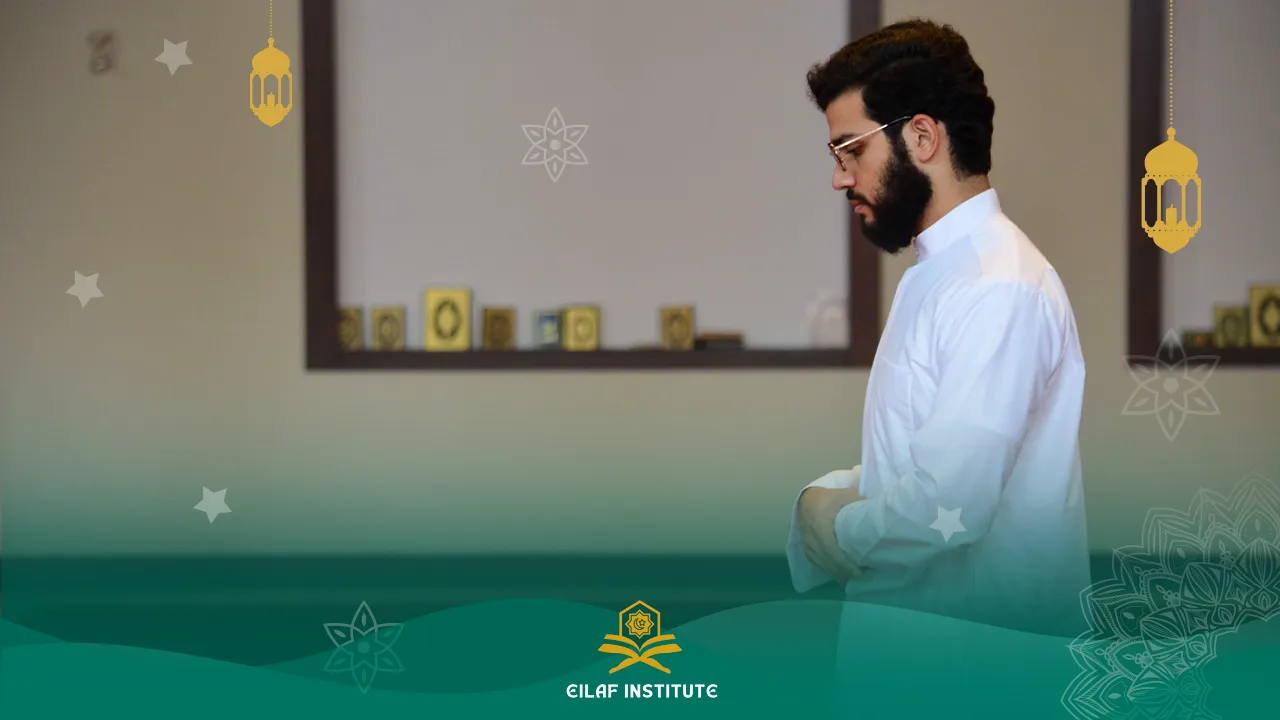
Your right hand should be placed above your left hand.
Step 4: Keep your eyes on the ground in front of you.
Prophet Muhammad (peace be upon him) stated that while praying, your eyes should always be directed to where you will prostrate.
Step 5: Recite the first chapter of the Holy Quran.
The first chapter of the Quran is known as Surah Fatihah.
Step 6: Bow down. This is called the ‘ruku’.
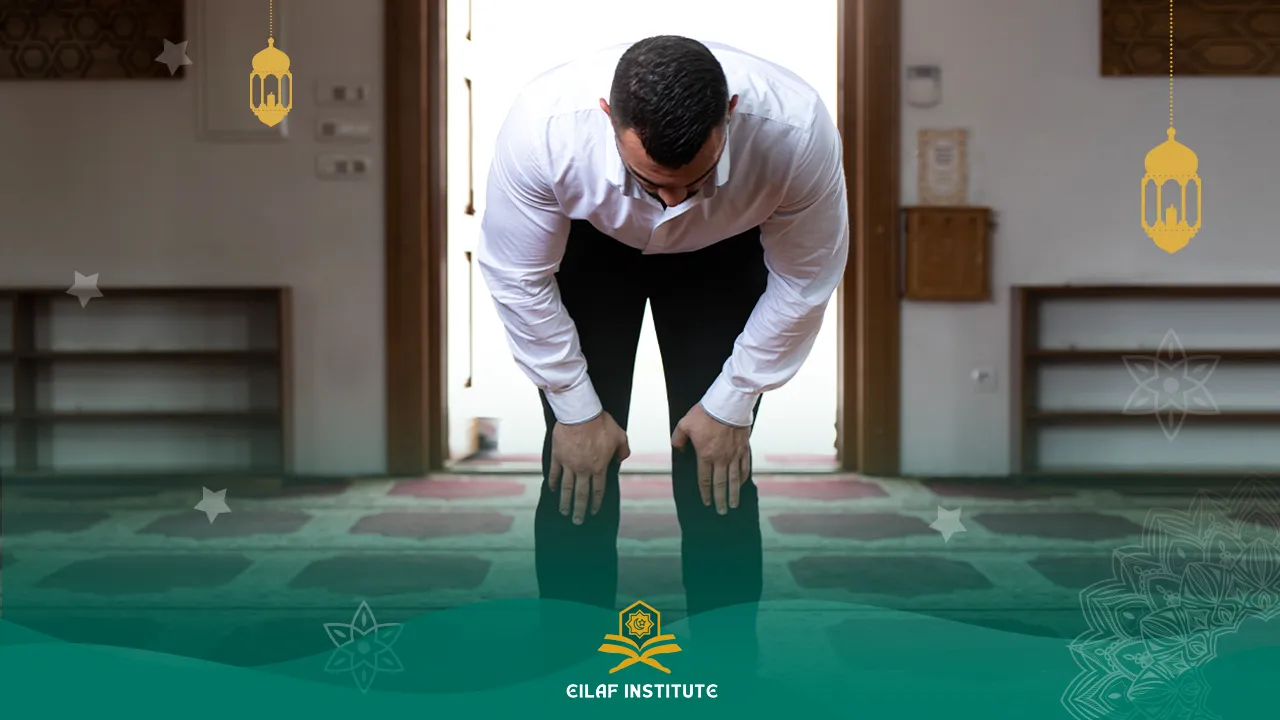
As you bow down, say ‘Allahu Akbar’. Maintain a straight back, hands on knees, and eyes on the ground where you will be prostrating.
Read also about : Can A Muslim Pray In English?
Step 7: Return to standing again.
As you move from the ruku stance to a standing position, raise your palms to your ears and say:
- Samee Allahu leeman hameeda! (‘Allah hears those who praise Him’)
Step 8: Go down to execute the prostration. This is called ‘sujud’.

As you go into this position, say Allahu Akbar. Also, ensure your forehead, nose, palms of both hands, knees, and toes are on the ground.
Step 9: Say this phrase while in sujud (prostration)
Say this sentence three times: Subhanna rabbeeya al ‘alaa (Glory be to my Lord the Most High)
Step 10: Rise from Sujud and sit for a moment.
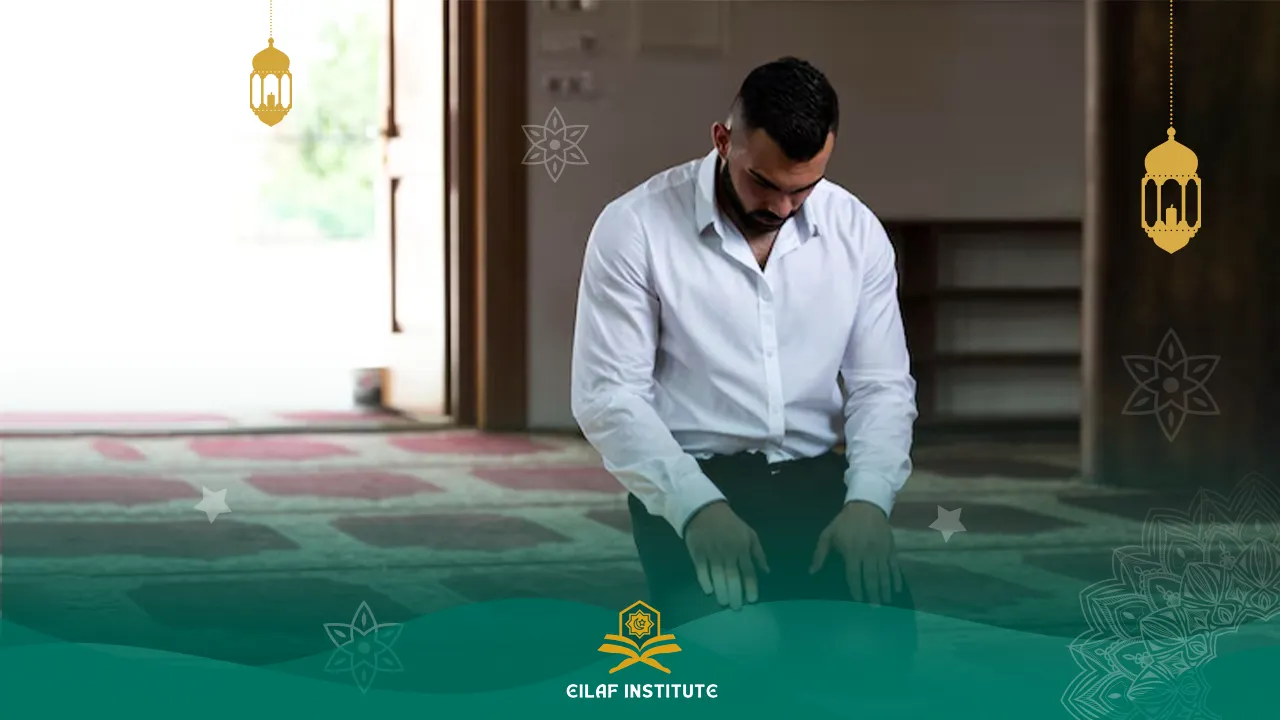
Say Allahu Akbar when you rise from sujud and sit on your left leg. Your left foot will rest on the floor, and your right foot will be upright. Put your hands on your knees. In this situation, it is best to beg Allah for forgiveness.
Step 11: Return to the position of Sujud.
You will repeat step 9, perform a second sujud, and say subhanna rabbeeya al ‘alaa three times more.
Step 12: After completing one full rakah, stand up and say Allahu Akbar.
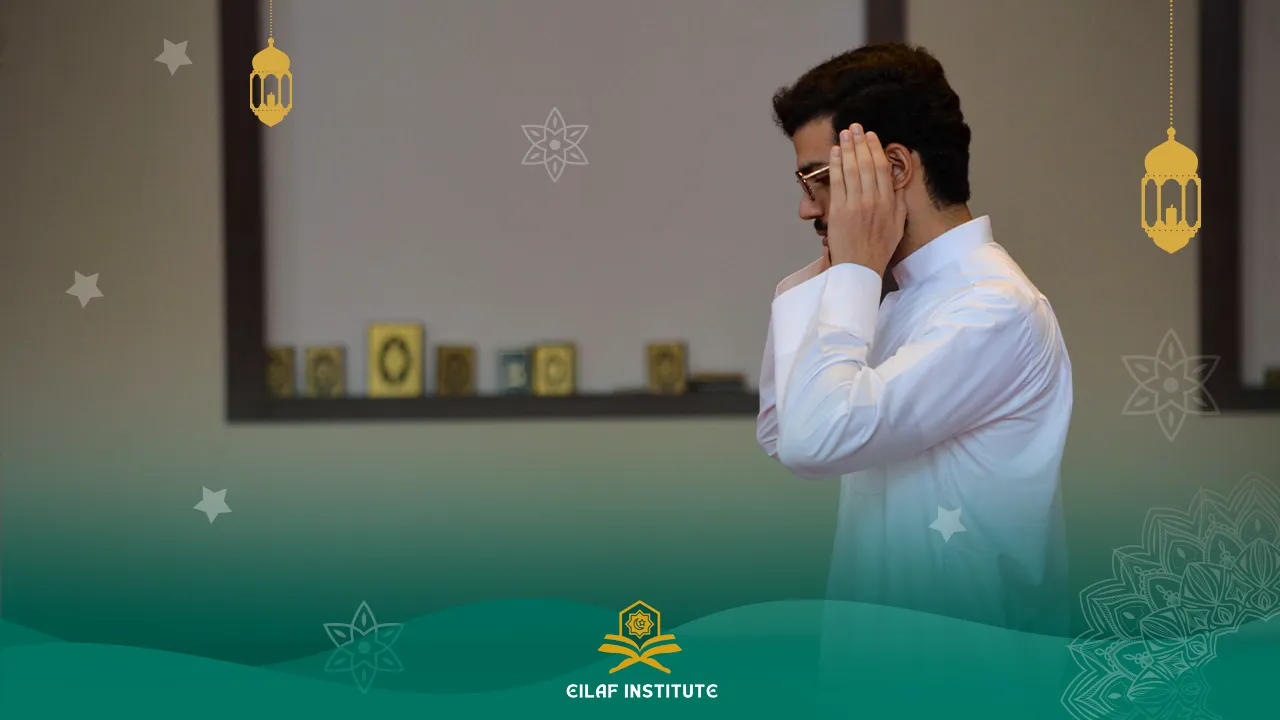
The first rakah of each prayer is completed in these twelve steps. When you reach the end of the second rakah, recite the tashahud.
Step 13: Do the tashahud at the end of every two rakah.
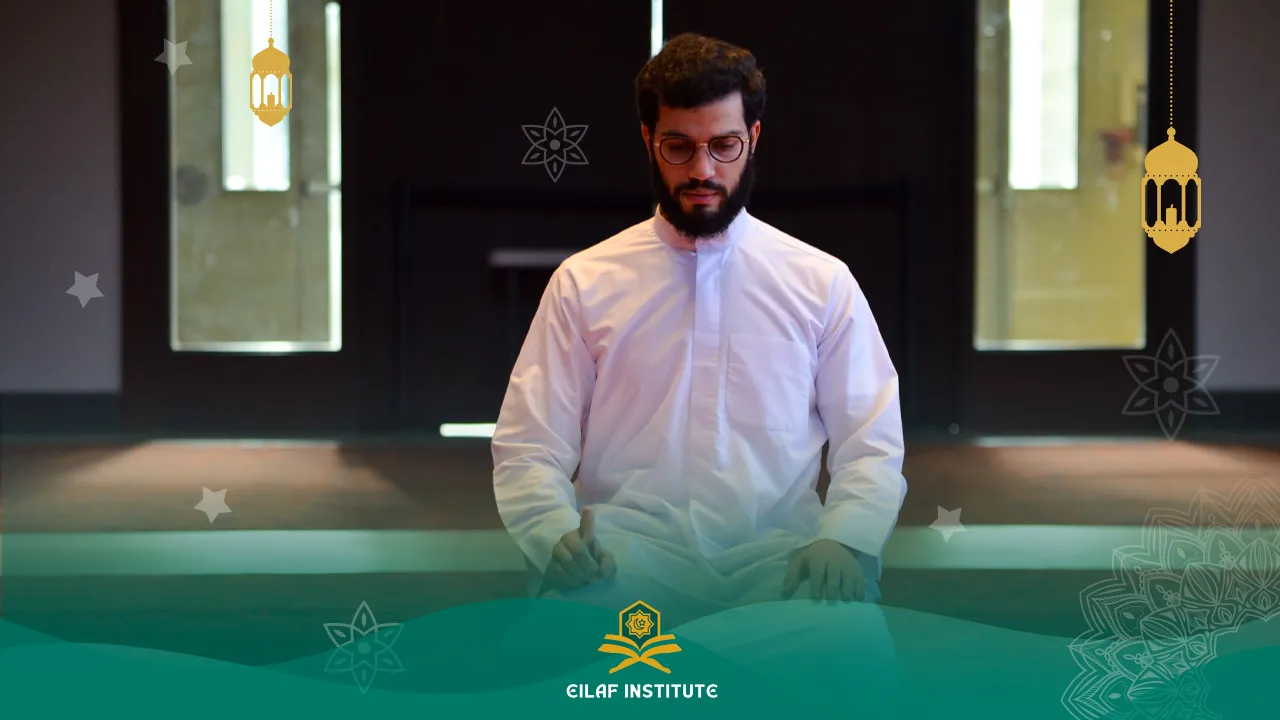
Instead of standing up after the two sujuds, you will now sit on your legs and knees. You would raise your right index finger and say:
Al Tahiyyaatu lilaahi was Salawaatu wat tayibaatu
Assalaamu ‘alaika ayyuhan nabiyyu wa rahmatu Allahi wa barakaatuh
Assalaamu ‘alaynaa wa ‘alaa ‘ebaadillaahis saaliheen,
Ash hadu allaa ilaha illa Allah Wa ash hadu anna Muhammadan ‘abduhuu wa rasuuluh.
“التَّحِيَّاتُ لِلَّهِ، وَالصَّلَوَاتُ وَالطَّيِّبَاتُ، السَّلَامُ عَلَيْكَ أَيُّهَا النَّبِيُّ وَرَحْمَةُ اللَّهِ وَبَرَكَاتُهُ، السَّلَامُ عَلَيْنَا وَعَلَى عِبَادِ اللَّهِ الصَّالِحِينَ، أَشْهَدُ أَنْ لَا إِلَهَ إِلَّا اللَّهُ وَأَشْهَدُ أَنَّ مُحَمَّدًا عَبْدُهُ وَرَسُولُهُ”
Now you know How To Pray In Islam!
Final Tashahhud with the Salat al-Ibrahimiyya
All compliments, prayers and pure words are due to Allah.
Peace be upon you, O Prophet, and the mercy of Allah and His blessings.
Peace be upon us, and on the righteous slaves of Allah.
I bear witness that none has the right to be worshipped except Allah, and I bear witness that Muhammad is His slave and Messenger.
- And for the final rakah in the prayer then you will add this part to the tashahud:
Allahumma salli ‘ala Muhammadin wa ‘ala aali Muhammad
Kamaa salayta ‘ala Ibraaheem wa ‘ala aali Ibrahim
Innaka Hameedun Majeed
Wa baarik ‘ala Muhammadin wa ‘ala aali Muhammad
Kamaa baarakta ‘ala Ibraaheem wa ‘ala aali Ibrahim
Innaka Hameedun Majeed
“اللَّهُمَّ صَلِّ عَلَى مُحَمَّدٍ وَعَلَى آلِ مُحَمَّدٍ كَمَا صَلَّيْتَ عَلَى إِبْرَاهِيمَ وَعَلَى آلِ إِبْرَاهِيمَ إِنَّكَ حَمِيدٌ مَجِيدٌ، اللَّهُمَّ بَارِكْ عَلَى مُحَمَّدٍ وَعَلَى آلِ مُحَمَّدٍ كَمَا بَارَكْتَ عَلَى إِبْرَاهِيمَ وَعَلَى آلِ إِبْرَاهِيمَ إِنَّكَ حَمِيدٌ مَجِيدٌ”
O Allah, send prayers upon Muhammad and the family (or followers) of Muhammad, Just as You sent prayers upon Ibrahim and the family (or followers) of Ibrahim,
Verily, you are full of Praise and Majesty.
O Allah, bless Muhammad and the family (or followers) of Muhammad as You blessed Ibrahim and the family (or followers) of Ibraaheem,
Verily, you are full of Praise and Majesty.
Read also bout : How to Pray in Islam for Beginners Female?
How to finish the Salah?
To finish the salah, recite the Tashahhud and perform the Tasleem. Do Salaam by turning your head over your right and left shoulders, repeating “Assalamu Alaikum wa Rahmat Allah.” (السلام عليكم ورحمة الله)
Salah is an essential element of Islam and has a special place in the hearts of Muslims all around the world.
It’s a meaningful act of devotion that strengthens your bond with Allah. Whether you’re just starting in Islam or want to improve your understanding.
Salah is a source of serenity, guidance, and a reminder of Allah’s mercy and love.
The State of the Heart During Prayer in Islam
Understanding how to pray in Islam goes far beyond physical movements, it’s a spiritual journey that begins with the heart.
The condition of a Muslim’s heart during Salah (Islamic prayer) reflects the depth of their faith and righteousness.
The better one’s connection with Salah, the more it transforms their character, actions, and relationship with Allah.
One may ask, how does this happen?
Because prayer in Islam is not just a ritual, it is the highest form of servitude, a daily reminder of submission, gratitude, and humility before the Creator.
Achieving khushoo’ (a state of deep focus and humility during Salah) is key to unlocking the true spiritual benefit of prayer. Allah ﷻ says in the Qur’an:
{Certainly will the believers have succeeded. They who are during their prayer humbly submissive…}
[Qur’an 23:1–2]
{قَدْ أَفْلَحَ الْمُؤْمِنُونَ * الَّذِينَ هُمْ فِي صَلَاتِهِمْ خَاشِعُونَ}
The Prophet Muhammad ﷺ also emphasized the power of Islamic prayer, saying:
“Prayer is the best deed, so whoever can increase in it, let him do so.”
[Ahmad, At-Tabarani; Al-Albani: Authentic]
“…Prayer is a light…”
[Sahih Muslim]
This shows that Salah is a light for believers, both in this life and the next. When we talk about how to pray Salah or how to read namaz, it’s essential to understand that this light begins in the heart.
Book New Muslim Converts Course now
Why You Should Consider Eilaf Institute for Your Studies?
Eilaf is a noticed professional online platform that teaches Quran, Arabic, and Islamic Studies to children and adults worldwide via one-on-one online sessions with native Arab male and female tutors.
It gives you the best tutors who will help you memorize the Holy Quran quickly.
Here are 5 reasons you should choose Eilaf:
- Has an accredited instructor.
- Provides one-on-one learning classes.
- Female tutors.
- Availability of 24/7 courses.
- Free trial classes.
Don’t hesitate to sign up for a free session with Eilaf ..

